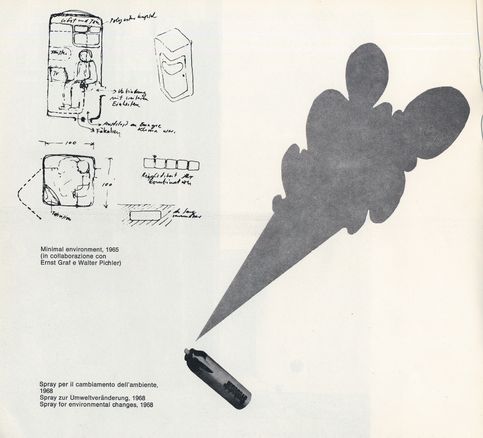Minimalumwelt, 1965

Hans Hollein
Minimalumwelt, 1965, 1965
Offset print Page from catalog "Hans Hollein" , XXXVI. Biennale di Venezia, 1972 21.3 x 22.9 cm, framed 42.5 x 30.2 cm
GF0002444.00.0-2004
Artwork text
I was invited to take part in the Paris Biennial 1965 (young artists under 35). There were, however, a lot of restrictions on participation—for example, there was an emphasis on residential housing (at that time I had no buildings of that kind to show), and, what was worse, I was allocated an exhibition space of only one square meter. And so I decided spontaneously to set up a Viennese telephone box, which was to be furnished as a minimal dwelling. A telephone box—not only because of its minimal size of one square meter, but also—recalling my idea of expanding architecture with other media—because of the expansion made possible by telecommunications. What I had in mind was an unused telephone box of the old black and yellow kind, with a door and windows. It turned out, however, that it was impossible to obtain an old box of that kind—although there were heaps of them in storage—because the postal administration was afraid that it would be used in some disrespectful, disparaging manner. Even kind mediation brought no success. And so I worked out a plan for a completely new unit using plastic, and suggested to Walter Pichler and Ernst Graf that we make and exhibit them together. Unfortunately, we were not able to raise the necessary funds and in the end we were unable to contribute to the Paris Biennial, the project was not developed any further and I also didn’t want any kind of substitute solution. The ironic part of the story is, however, that a newspaper critique of the Biennial described my (non-existent) contribution in positive terms, and this represented not least a phenomenon, namely that there was a different—visual— reality, that of the new media, thus confirming my proposition that a building does not really have to exist or be experienced physically if it can be simulated or communicated by media. (Hans Hollein)